
These videos are licensed under a Creative Commons License. Specifically, they are licensed under the Attribution-NoDerivs-NonCommercial 1.0 license. If you're not familiar with Creative Commons, please read the linked-to document to find out what you are and are not allowed to do with them.
The videos are hosted on YouTube. Timings are (sometimes) approximate.
If you like these videos, you might also like those made by Borehamwood Moviemakers, of which I'm a member.
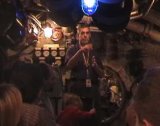
|
U-505. 2003. 8 minutes 38 seconds. A guided tour of U-505, a Second World War German U-boat on display at the Museum of Science and Industry in Chicago. |
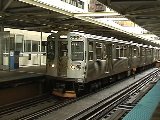
|
CTA Tour. 2003. 8 minutes 45 seconds. A tour of downtown Chicago on the CTA (Chicago Transit Authority) Orange Line. |
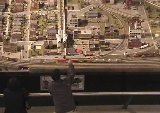
|
The Great Train Story. 2005. 4 minutes. A large model railway layout at the Museum of Science and Industry in Chicago. |
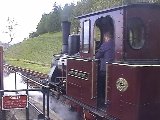
|
Brecon Mountain Railway. 2005. 5 minutes 30 seconds. A trip on a narrow gauge steam railway in the Brecon Beacons National Park in Wales. |
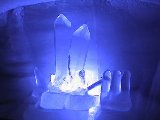
|
The Highest Art Gallery in the World?. 2006. 1 minute. A documentary about the Eispalast (Ice Palace), an art gallery that's cut into a glacier on the Jungfrau in the Swiss Alps. The place was apparently built to give tourists something to look at when the weather was bad on the mountain outside (!). |
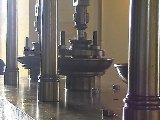
|
Grand Junction Ninety. 2005. 4 minutes. A documentary about Grand Junction Ninety, a Cornish beam engine preserved at Kew Bridge Steam Museum. This video won second place in the 2005 HACCA competition. |
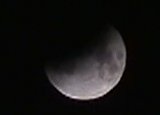
|
A Dragon Devours the Moon. 2005. 1 minute. Footage of the lunar eclipse of 9 November 2003. It says 2005 because it sometimes takes me a while to get around to editing what we've recorded. |
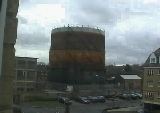
|
Highlights from the Life of a Gasometer. 2005. 1 minute. This is a timelapse video, recorded over about a week, of a gasometer outside my window. (Don't knock it... I wanted to plug the camcorder into the computer, so it could record for a long time while I wasn't there, and so I wouldn't have to spend a fortune on tapes. Firewire cables are very short, which meant the camcorder had to be in the same room as the computer. That rather limited my choice of subjects.) I recorded one frame every four seconds, and then sped up the edited version by a factor of seven. This means that what you see here runs 700 times faster than real time. |
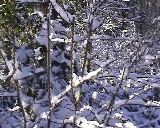
|
Cold Snap. 2004. 1 minute. We woke up one morning in January 2004 to find it was snowing. This almost never happens in the south-east of England these days, so Breda grabbed the camcorder. She filmed some of it in the open space by the railway line, while it was still in its picturesque Christmas card state, before thousands of feet turned it into dirty grey slush. |
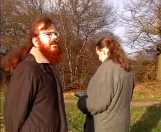
|
Timecops Trailer. 2003. 1 minute. A trailer for my video Timecops: The O'Grady Incident. At the time I made this, the filming was still incomplete, and I'd done almost none of the post-production. This meant I had to be very selective in what I showed. (I'm surprised I pulled it off, actually.) I did about four tests for the voice-over in different styles, some of which were quite dreadful. I'm not entirely happy with the one I ended up using, but it's the best I had. |
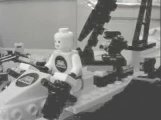
|
The Capitalist Exploitation of Self-Organising Systems. 1999. 1 minute 18 seconds. This is a stop-motion animation that I made with some Lego and a cheap-and-nasty digital camera. The picture quality isn't great, even allowing for the cruddiness of the camera. I switched off the camera's built-in flash, and then couldn't get enough light from other sources to compensate. This is also why it's in black and white - because of the poor lighting, it looked awful in colour. When I was doing the music, I happened to convert it to black and white so that the computer would have more power to spare for keeping up with the audio, and I thought that made it look much better. The grainy, jerky quality of the images reminded me of a Soviet-era propaganda film, hence the "capitalist exploitation" in the title. |
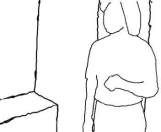
|
Rotoscoping Experiment 1. 2001. 45 seconds. Rotoscoping is an animation technique that involves tracing over live action film to produce the drawings. As the title suggests, this video was an experiment to see whether I could make the technique work. You can get programs specifically for rotoscoping and cel-based animation, but I don't have one of those, and this project was simple enough not to require one. I videoed myself performing the actions and edited the best takes together (using Ulead Media Studio), as if this was going to be a live action film. Then I separated the video file into individual frames, producing a sequence of still images. I then deleted every second still image. This cut the frame rate from 25 frames per second to 12.5. It resulted in the animation having a jerky, flickering quality, but halved the amount of drawing I had to do in the next stage. I loaded each of the remaining images into an image editor (JASC Paint Shop Pro). On a new transparent layer, I drew over the outlines of myself and any scenery or props I wanted. I used a graphics tablet for the drawing. You can probably tell I hadn't had enough practice with it at this point... I saved the new layer by itself as a new image. Repeat for the remaining 600 or so images. I drew as quickly as I could, which is another reason the lines are very wobbly. Even so, it took several evenings. Once the drawings were done, I loaded them back into Media Studio and chained them together in a single video file. Then I just added some sound effects and the video was finished. |
Last update: 25/7/2020 17:09